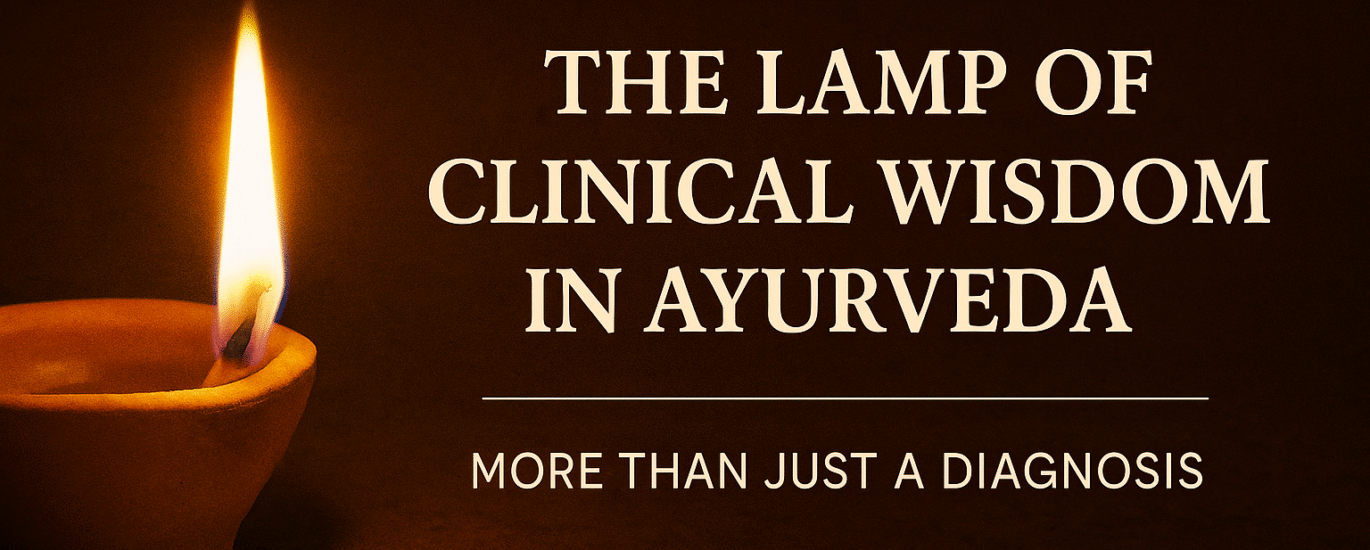Author: Vaidya Khushal Kashyap
Category: Clinical Ayurveda | Holistic Healing | Charaka Samhita Insights
“Even a physician who knows the truth, if he doesn’t understand the inner being of the patient using the lamp of knowledge and intellect, cannot truly treat disease.”
🌿 Introduction
In today’s world of fast medicine and symptom-based treatment, the ancient wisdom of Ayurveda offers a timeless reminder:
Treat the patient, not just the disease.
This core philosophy is beautifully captured in a powerful shloka from the Charaka Samhita (Sutra Sthana 4.12), which redefines how a true Vaidya must approach diagnosis and healing.
Let’s dive into the deeper meaning and real-world application of this verse — through clinical logic, stories, and Ayurvedic principles.
📜 The Shloka: A Beacon of Ayurvedic Diagnosis
ज्ञानबुद्धिप्रदीपेन यो नाविशति तत्त्ववित् ।
आतुरस्यान्तरात्मानं न स रोगांश्चिकित्सति ॥
🔍 Translation:
“Even a physician who knows the principles (Tattvavit), if he does not enter the inner being of the patient using the lamp of knowledge (Jñāna) and intellect (Buddhi), cannot truly treat the diseases.”
🧠 The Hidden Meaning: Beyond the Surface
In this verse, Charaka compares the physician’s insight to a lamp (Pradīpa) — one that’s powered by:
- Jñāna: Shastric knowledge – what you learn from texts
- Buddhi: Clinical intelligence – how you apply it in real life
Together, these allow a Vaidya to explore the inner being (antar-ātmā) of the patient, including:
- Emotions
- Stress levels
- Mental tendencies
- Lifestyle and behavioural patterns
If a physician misses this internal examination, treatment becomes mechanical, limited only to the symptoms, not the cause.
🔬 Clinical Example: Acidity or Anxiety?
A patient complains of chronic acidity.
You prescribe Avipattikara Churna or Kamdugha Ras. Relief comes, but only temporarily.
On deeper questioning, you discover:
- He skips meals.
- Works under intense stress.
- Suppresses emotions.
The root isn’t just “pitta imbalance,” but a mental-emotional overload. Unless this inner dimension is addressed with proper counselling, Vihara-Chikitsa (lifestyle correction), and Rasayana support, true healing won’t occur.
📖 The Story of Two Vaidyas
In ancient Takshashila, there lived a brilliant Vaidya named Bhargava. A scholar of all Samhitas, he was revered for his sharp intellect.
One day, a woman approached him with eczema. He prescribed a lepa and a decoction. But weeks passed, and her condition didn’t improve.
Then came his young disciple, Yatin. Quiet and observant, he simply sat with her and asked how she felt.
She burst into tears. Her husband had passed away, and she had been silently suffering. Her skin disorder wasn’t just external — it was an expression of internal grief.
Yatin treated her with:
- Ashwagandha & nourishing rasayanas
- Abhyanga with warm oils
- Emotional support
She healed — inside and out.
Bhargava asked: “What medicine did you give?”
Yatin replied, “I simply used the lamp of knowledge and compassion — and entered her inner world.”
This is ज्ञानबुद्धिप्रदीप in action.
🧭 The Ayurvedic Clinical Checklist
Here’s how to apply this principle in your daily practice:
✅ Ask, then listen deeply – go beyond “where does it hurt?”
✅ Assess the mind – stress, grief, anxiety, fear often mask themselves as vāta, pitta, or kapha disorders.
✅ Don’t ignore non-verbal signs – body language, eyes, posture tell you more than BP readings.
✅ Tailor every chikitsa – based on Prakriti, Satva, Ahara, Vihara, and mental state.
🧘♀️ For Practitioners & Students
If you’re a student of Ayurveda or a new practitioner, remember:
“The best physicians are not those who remember all shlokas,
but those who can see what the patient doesn’t say.”
Let your clinic be a place of quiet observation, sensitive questioning, and whole-person healing.
✨ Final Thoughts
This shloka from Charaka is not just a verse — it is a clinical compass.
In an age where everything is fast-paced and protocol-driven, Ayurveda calls us to pause, observe, and connect.
Only then does treatment become chikitsa in the truest sense — a dialogue between doctor and soul.
So next time a patient walks in, don’t just diagnose their disease.
Light your lamp. Enter their inner world. Begin the real healing.


